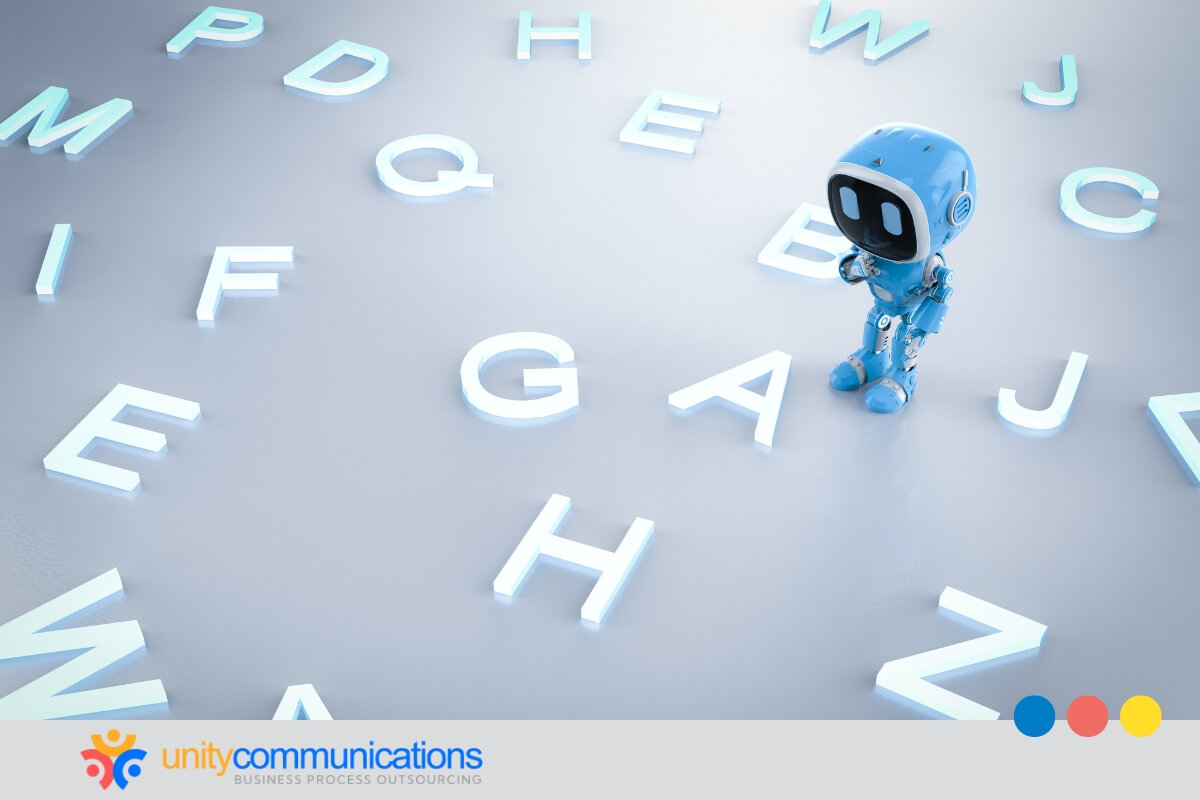Table of Contents
The conversation around artificial intelligence (AI) often leads to a critical question: What is the difference between AI and AI agents? At first glance, the two terms seem interchangeable.
In reality, AI is the underlying intelligence, while AI agents are autonomous companies that apply that intelligence to perform tasks, adapt, and even make independent decisions.
For leaders and organizations, understanding this distinction is critical. AI provides broad potential. AI agents deliver outcomes that transform workflows, customer experiences, and even strategic decision-making.
In this guide, we’ll break down 10 key differences so you can understand where each fits into your operations and how to apply them effectively.
1. Scope: Broad AI vs. task-focused agents

When leaders ask what the difference is between AI and an AI agent, scope is usually the first thing they clarify. AI refers to the entire set of technologies that mimic aspects of human intelligence.
It encompasses machine learning (ML) models, natural language processing (NLP), speech recognition, and additional technologies. This broad category powers insights and predictions, but doesn’t automatically translate those insights into business action. To understand this better, it’s helpful to first answer what an AI agent is.
An AI agent is a software company designed to act with purpose. Instead of simply generating insights, it applies intelligence to achieve specific outcomes and carry out tasks.
The difference in scope is like comparing a toolbox to a skilled tradesperson. AI provides all the tools, while AI agents utilize them to accomplish the task. Leaders who expect AI to act independently might feel disappointed, but those who invest in agents see immediate, measurable results.
| AI in practice | AI agent in practice |
|---|---|
| AI predicts which products will sell best this quarter. | An AI agent automatically adjusts inventory, sends purchase orders to suppliers, and updates enterprise resource planning (ERP) records. |
| AI generates a forecast of customer support demand. | An AI agent schedules staff shifts, reroutes overflow calls, and sends alerts to managers. |
| AI recognizes scanned receipts in images. | An AI agent files the receipts into expense systems, categorizes them, and flags unusual spending. |
Understanding the difference between AI and AI agents at the scope level ensures you don’t stop at raw intelligence but take the next step toward automation and execution.
2. Autonomy: Reactive AI vs. self-directed agents
Another way to answer the question is by examining autonomy. Most AI systems are reactive. They wait for input. A chatbot answers when prompted, or a predictive model runs only when you feed a dataset to it. This reactive mode is valuable but limited in scale.
AI agents are self-directed. They act independently, often without human initiation. For instance, a cybersecurity AI agent doesn’t just wait for IT staff to ask for a scan. Instead, it continuously monitors traffic, detects anomalies, blocks suspicious accounts, and sends real-time alerts. This transforms technology from a passive tool into an active teammate.
Research reinforces the importance of autonomy. Gartner predicts that by 2029, agentic AI will autonomously resolve 80% of common customer service issues without human intervention.
This indicates that enterprises are rapidly transitioning from reactive AI support to proactive, self-directed AI agents that handle tasks end-to-end. This autonomy matters in business because speed and responsiveness have a direct impact on revenue, risk, and customer satisfaction.
| AI in practice | AI agent in practice |
|---|---|
| Chatbot answers customer questions when asked. | An AI agent notices a rise in delivery questions, updates frequently asked questions (FAQs), and alerts supply chain managers. |
| AI translates a contract when uploaded. | An AI agent detects a new vendor contract, translates it, files it, and sends summaries to the procurement department. |
| AI flags a suspicious transaction. | An AI agent freezes the account, initiates fraud protocols, and notifies compliance officers. |
In industries such as healthcare or finance, waiting for a human to press a button can mean costly delays. Agents bridge that gap by taking initiative. For executives, the difference between AI and an AI agent in autonomy is the gap between having tools that respond versus having digital staff that takes action.
3. Decision-making: Rules-based AI vs. strategic agents
Decision-making is another critical element in the difference between AI and AI agents. AI typically follows rules, patterns, or probabilities derived from its training data. It recognizes what looks unusual, forecasts potential risks, or recommends options, but doesn’t create strategies.
AI agents engage in multi-step, strategic decision-making. They don’t just flag an issue; they plan the best resolution and implement it. For example, in logistics, AI might predict that a snowstorm will delay shipments. An AI agent, however, reroutes trucks, updates delivery ETAs in customer apps, and reallocates drivers to priority routes.
This difference has direct business implications. AI gives insight, but agents reduce disruption. Leaders in industries including supply chain, finance, or HR don’t just need predictions. They need real-time actions that prevent problems from escalating.
| AI in practice | AI agent in practice |
|---|---|
| AI forecasts traffic congestion. | An AI agent reroutes trucks, updates customers, and reallocates drivers. |
| AI predicts employee turnover risk. | An AI agent triggers retention surveys, schedules check-ins, and alerts HR. |
| AI recommends price adjustments. | An AI agent updates pricing, recalibrates ad campaigns, and alerts marketing teams. |
For companies wondering what the difference is between AI and AI agents, decision-making demonstrates that agents are intelligent and strategic actors.
4. Goal-setting: Assigned tasks vs. self-initiated objectives
Another significant distinction between AI and AI agents lies in that they set goals. Traditional AI executes tasks it is explicitly told to do. For instance, you ask it to summarize survey results, and it delivers the information accurately. But the scope stops there.
AI agents extend beyond assigned goals. They can create sub-goals and anticipate needs. If asked to prepare a sales report, an AI agent might also highlight anomalies, generate charts, identify areas for improvement, and even schedule a presentation for the sales VP. It doesn’t just complete the task; it completes the context around it.
For managers, this independence reduces the need for micromanagement. Instead of providing tools with step-by-step instructions, you can trust agents to take broader responsibility for achieving objectives. This shift changes the way you view digital technology from assistants to true collaborators.
| AI in practice | AI agent in practice |
|---|---|
| AI generates a sales report on request. | An AI agent generates the report, identifies anomalies, schedules a meeting, and sends emails to stakeholders. |
| AI summarizes customer feedback. | An AI agent categorizes issues, assigns them to departments, and drafts response strategies. |
| AI drafts an email. | An AI agent drafts, personalizes with customer relationship management (CRM) data, attaches documents, and schedules sending. |
In practice, the difference between AI and AI agents in goal-setting is akin to the distinction between tools that complete tasks and teammates that achieve objectives.
5. Adaptability: Fixed routines vs. real-time adjustments

AI and AI agents also vary in adaptability. AI models typically operate within predefined routines. They return the same output for the same input, regardless of environmental changes. While reliable, this rigidity can be a liability in fast-moving markets.
AI agents adapt in real time. They don’t just deliver consistent outputs; they evolve in response to new data and shifting circumstances. For example, a customer service AI agent might detect frustration in a client’s tone, adjust its response, and escalate the issue before dissatisfaction escalates into churn.
This is where the comparison between an AI agent and a chatbot becomes clear. While a chatbot typically delivers scripted answers, an AI agent can personalize responses, anticipate steps, and even trigger actions across different systems.
For businesses, adaptability translates into agility. In volatile industries such as e-commerce or travel, agents help you pivot quickly, maintain customer satisfaction, and prevent costly disruptions.
This real-time learning ensures technology stays relevant rather than outdated.
| AI in practice | AI agent in practice |
|---|---|
| An AI chatbot provides scripted answers. | An AI agent adapts its responses to the customer’s tone and escalates when necessary. |
| AI predicts product demand. | An AI agent updates inventory, reroutes shipments, and notifies procurement of shortages. |
| AI monitors system logs. | An AI agent detects anomalies, reroutes workloads, and prevents downtime. |
Here, the answer is adaptability if you ask what the difference is between AI and an AI agent. AI is consistent but rigid, while agents evolve to keep pace with dynamic environments.
6. Memory use: Short-term vs. persistent
Most AI systems operate with short-term or session-based memory. Once a conversation ends or a process completes, the context is lost. The next interaction starts from zero, requiring users to repeat instructions or re-upload data.
AI agents often maintain persistent memory. They store context across sessions, projects, and even departments. A customer-facing agent remembers prior complaints and offers personalized resolutions. To tailor the next pitch, a sales agent tracks clients’ history, preferences, and objections.
This persistent memory enables agents to resemble long-term collaborators rather than one-off tools. It facilitates smoother workflows, reduces repetition, and increases customer loyalty by creating a sense of continuity in interactions.
For organizations, this also means improved data collection over time, as agents can monitor trends and identify patterns. According to Gartner, AI agents will support or automate 50% all business decisions by 2027, underscoring the critical role persistent memory plays in strategic and operational intelligence.
| AI in practice | AI agent in practice |
|---|---|
| AI answers a customer’s question but forgets the conversation afterward. | An AI agent recalls prior support tickets, adapts to past frustrations, and personalizes the interaction. |
| AI generates a project report once. | An AI agent tracks project milestones over weeks, updates the report automatically, and notifies stakeholders of progress. |
| AI translates text in one session. | An AI agent builds a glossary of preferred translations for brand consistency across all documents. |
For businesses, the differences in memory comes down to this: AI is a repetitive tool that forgets context, while AI agents act as digital teammates that retain knowledge and build long-term continuity.
7. Tool orchestration: Isolated AI tools vs. coordinated agents
Another clear distinction between AI and an AI agent is orchestration. AI is often a single-task performer—powerful in isolation but disconnected from broader workflows. For instance, AI might classify emails. However, it doesn’t update calendars, notify teams, or log cases in CRM.
AI agents act as orchestrators. They coordinate multiple tools, moving seamlessly across platforms and systems to complete workflows. A hiring AI agent could pull applications from LinkedIn, cross-check them in the applicant tracking system (ATS), schedule interviews, and send reminders to candidates and managers, all without human intervention.
This orchestration is where AI agents deliver the most significant productivity gains. Instead of siloed outputs, you gain integrated processes that reduce manual handoffs and eliminate redundancy.
The result is improved efficiency, along with greater alignment between teams and systems.
| AI in practice | AI agent in practice |
|---|---|
| AI scans applications for keywords. | An AI agent screens applications, schedules interviews, updates the ATS, and emails managers. |
| AI classifies customer complaints. | An AI agent routes tickets to the correct department, prioritizes urgent issues, and updates CRM records. |
| AI detects low inventory. | An AI agent places supplier orders, updates ERP records, and notifies the finance department. |
By understanding orchestration, you can see that agents don’t just work in silos. They connect systems and teams for end-to-end automation.
8. Task complexity: Simple tasks vs. multi-step workflows
Task complexity is one of the most practical ways to illustrate the differences between AI and AI agents. AI excels at simple, narrow tasks such as text summarization, data classification, or basic translation. These tasks improve efficiency but remain isolated from one another.
AI agents can handle complex, multi-step workflows. For example, a marketing agent doesn’t just draft content. It researches trends, generates copy, schedules posts, monitors engagement, and reports back with insights.
The agent streamlines a process that typically requires multiple teams into a seamless, automated workflow. This ability to manage complexity positions agents as enterprise-ready. Businesses that rely solely on traditional AI risk getting stuck with fragmented tools, while those that deploy agents unlock holistic process automation that scales across departments.
This shift mirrors the logic of business process outsourcing (BPO). Just as companies outsource entire workflows to specialized providers for efficiency and expertise, AI agents take ownership of multi-step digital processes, delivering end-to-end value.
| AI in practice | AI agent in practice |
|---|---|
| AI summarizes a blog article. | An AI agent researches trends, writes the draft, publishes it on the CMS, and tracks engagement. |
| AI analyzes sales data. | An AI agent compiles the data, highlights patterns, prepares a presentation, and shares it with managers. |
| AI flags anomalies in code. | An AI agent fixes the code, pushes updates to GitHub, and runs automated tests. |
In practice, the difference between AI and an AI agent in terms of complexity lies in the narrow assistance and full-scale workflow transformation.
9. Proactivity: Difference between AI and an AI agent

When comparing AI and AI agents, proactivity stands out as one of their important distinctions. AI is passive; it waits for instructions. If you don’t issue a command, the chatbot remains idle. It won’t respond unless the customer types first.
AI agents are proactive. They anticipate needs, initiate actions, and even suggest next steps. A financial AI agent could warn of potential cash flow issues weeks in advance. A healthcare AI agent might remind patients of follow-ups and schedule appointments automatically.
This proactive nature makes agents invaluable in risk prevention, customer satisfaction, and efficiency. Instead of reacting after the fact, you can stay ahead of challenges and opportunities.
In a way, this mirrors how outsourcing works. Just as outsourcing partners take initiative to manage operations without constant oversight, AI agents anticipate needs and execute actions that lighten the load for internal teams.
| AI in practice | AI Agent in Practice |
|---|---|
| AI responds when asked for a cash flow analysis. | An AI agent monitors cash flow daily, flags risks early, and alerts finance teams. |
| AI answers IT troubleshooting questions. | An AI agent detects issues, applies fixes, and automatically notifies IT managers. |
| AI drafts a customer response. | An AI agent detects delayed orders, proactively emails customers, and compensates them with discount codes. |
The contrast is clear. Proactivity is the gap between tools that wait and agents that take initiative.
10. Use case alignment: Narrow AI tools vs. enterprise-wide agents
Finally, you can compare AI and AI agents based on their use-case alignment. AI excels in narrow, consumer-friendly use cases, including chatbots, translation, text generation, and search. These tools are great for everyday productivity but remain limited in scope.
AI agents excel in enterprise automation. They manage multi-department workflows, including HR onboarding, IT incident management, compliance tracking, and marketing campaign execution. They provide the persistence, orchestration, and adaptability required for business transformation at scale.
For executives, this distinction also connects to the difference between automation and AI agents. Traditional automation follows predefined scripts; if X happens, then Y is triggered.
AI agents go further by adapting to changing circumstances, learning from context, and initiating steps that weren’t preprogrammed.
| AI in practice | AI agent in practice |
|---|---|
| AI chatbot answers basic product questions. | An AI agent handles the entire order process, from inquiry to shipping updates. |
| AI translates a single employee handbook. | An AI agent updates all global HR documents, syncs translations, and distributes them company-wide. |
| AI drafts compliance checklists. | An AI agent monitors compliance, generates reports, and automatically notifies regulators. |
Ultimately, the difference between AI and AI agents in use cases involves incremental gains and enterprise-wide transformation.
The bottom line
The honest answer to the difference between AI and AI agents is this: AI powers capability, but agents deliver measurable outcomes. AI is the brain, but AI agents are the doers. Agents are the systems that anticipate, adapt, and orchestrate across departments.
Organizations that embrace AI agents gain more than efficiency. They acquire a new class of digital teammates capable of transforming how work gets done.
The future belongs to companies that ask questions and act on the answers that differentiate AI and AI agents. Ready to see how AI agents can reshape your operations? Let’s connect to explore pilot projects, integration strategies, and ROI-driven adoption that fit your business today.




